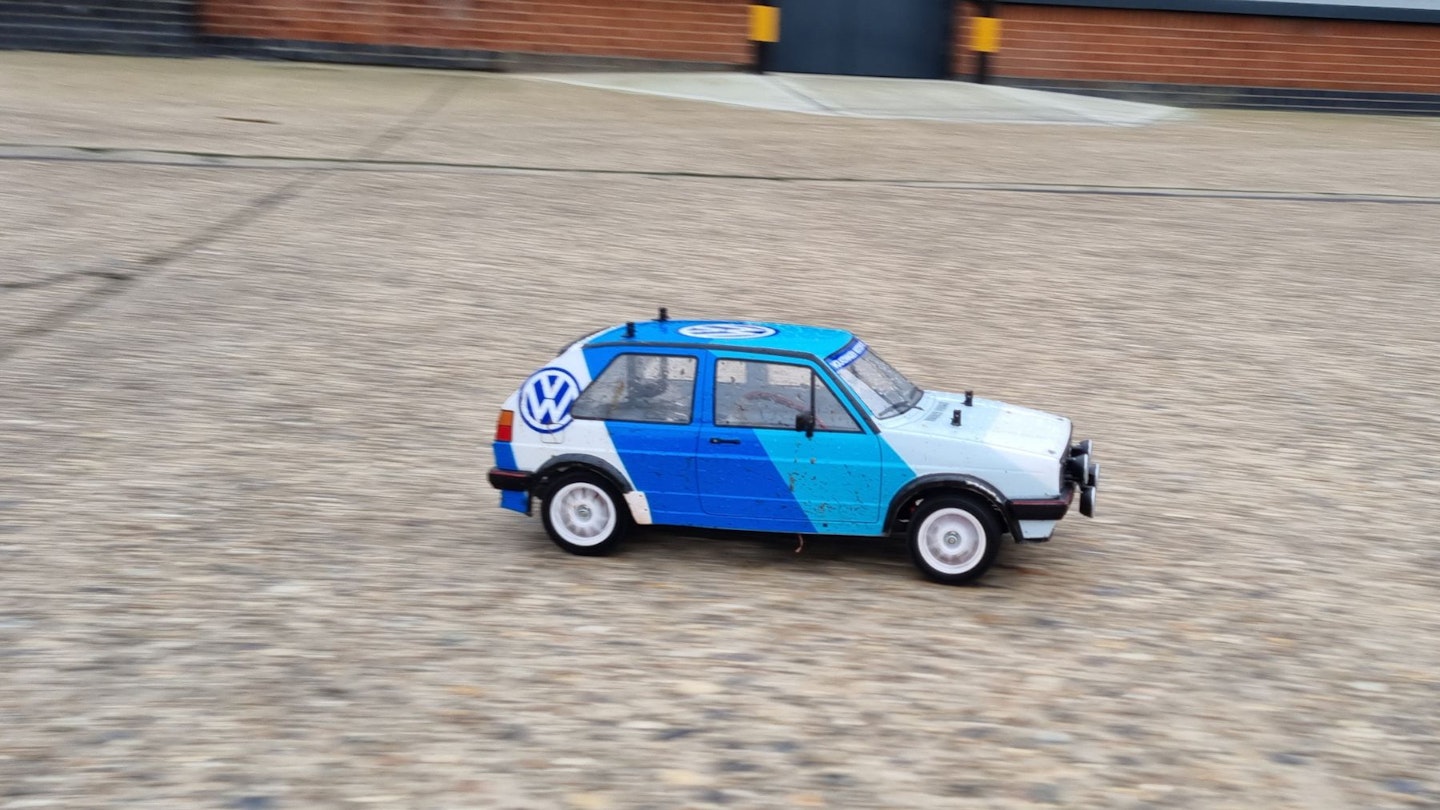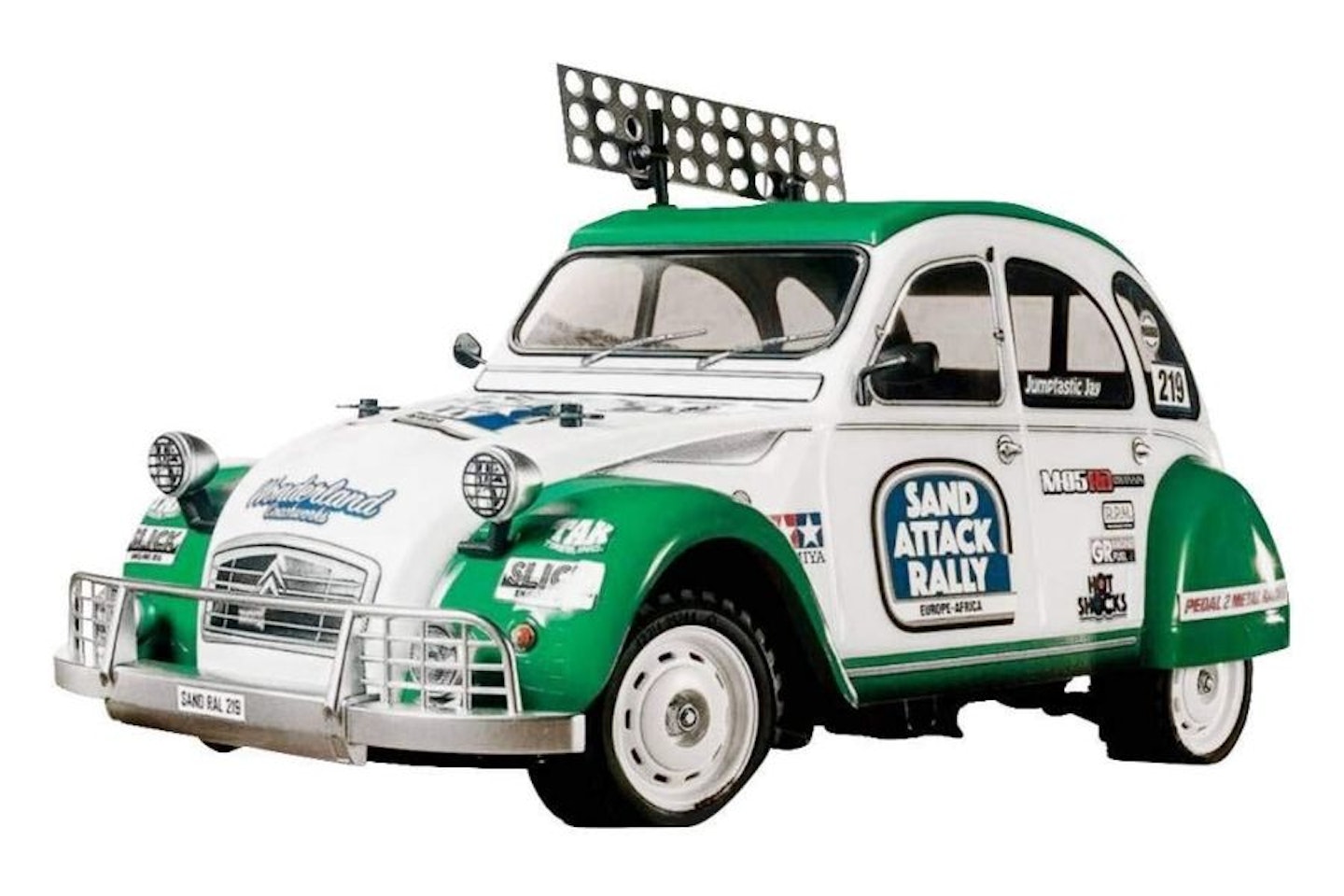There are arguably two types of RC car. On the one hand you’ve got your instant gratification ready to runs, and the other models that reward patience and a little bit of skill. The Tamiya MF-01X VW Golf GTI falls heavily into the latter camp.
As with many other Tamiya RC cars, the MF-01X Golf comes as a kit that you must assemble. That includes painting the exceptionally well-detailed bodyshell, although thankfully the fetching blue stripes are stickers, with the main shell only requiring white spray.
The MF-01X chassis itself has seen duty under a number of different shells. That includes other rally cars such as the Mk2 Ford Escort and Fiat 131 Abarth, along with the Suzuki Jimny and two-door Mercedes G-Wagon. It’s four-wheel drive with a stout shaft connecting the front and rear gearboxes.
As Tamiya aficionados will no doubt have noticed, the M (for Mini) in the chassis’ name means this is smaller than conventional 1/10th scale touring cars. There are plenty of rivals out there that confirm to the smaller size, although most are two-wheel drive unless you’re looking at serious racing chassis.
A serial Tamiya collector, keen RCer and experienced road tester, CAR magazine’s new cars editor Alan Taylor-Jones has been tasked with testing the MF-01X. Keep reading to see what he thought of the build process and driving experience.

Pros
- Excellent instructions make for an easy and enjoyable build
- Stable handling
- Detailed bodyshell
Cons
- Cheaper rivals available
The build
Tamiya is renowned for its easy to construct kits, and the MF-01X is no exception. All of the plastic parts are clearly marked, hardware comes in lettered bags and stickers are numbered, too. For the smoothest build, I’d always recommend a bit of prep. Read the manual fully before you start, get a few ramekins to empty the bags into and charge the battery.
The kit comes with a four-way wrench for nuts and bolts and 1.5mm allen key, but you’ll need a couple of screwdrivers, pliers, a craft knife and superglue from your own toolbox. I’d recommend a Tamiya screwdriver set for the best purchase on the heads. It’s an investment you’ll appreciate when stripping the car for maintenance and upgrades.
Plastic parts come on a sprue where a number of components are on one mould. I like to use side cutters to snip them off as cleanly as I can, then use the knife to trim away any excess plastic for a clean look. Remove only the parts you need so you can still see what number the other components are.
All the steps in the manual have detailed diagrams that show exactly how parts fit together and with what hardware. Screws and nuts are drawn lifesize on the left margin, so it’s easy to double check you’ve grabbed the right length and diameter, too. There’s also a handy reminder to centre your steering servo before you fit it to the car, ensuring it tracks straight.
I’ve deviated slightly from stock for my Golf. For a start I’m building the car with metal ball bearings instead of plastic bushes for the axles and gears. They’re a cheap upgrade that’ll increase battery life, improve performance and reduce wear and tear. It’s a shame they’re not standard, but Tamiya aren’t the only manufacturer to use bushes instead.

I also felt the Campagnolo-style wheels looked a bit too 70s for this 80s hot hatch. Instead, I’ve gone for Tamiya 11 spoke racing wheels in white, with plenty of other styles also available. You can upgrade a lot further than I have with oil-filled shocks, a metal motor mount, stiffer mounts for the top of the shocks and more.
The chassis took a single evening to get from a box of parts to something that’d drive around the living room floor. It’s the body that takes the real time. Not only is there the cutting, sanding, drilling, masking, painting and stickering the main shell, there’s also the details.
On the Golf you get separate hard plastic bumpers, mirrors and spotlamps that all need painting and stickering as well. It can be slow progress especially if Airfix kits or Warhammer didn’t really interest in your formative years, but it’s these little details that make Tamiya bodyshells amongst the best out there.
While the MF-01X isn’t the simplest Tamiya chassis, a beginner shouldn’t have too much difficulty if they’re able to follow instructions. You’ll certainly find it a learning experience if you’re not familiar with the inner workings of a car, and an enjoyable one, too. As for someone who’s built plenty before, the unusual chassis layout and clear instructions made the Golf a fun car to put together.
Watch the build:
The drive
Like most other Tamiya kits, the MF-01X is designed with beginners in mind. That means no high-performance brushless motor systems, precious few adjustable suspension components, and simple friction dampers.
The 25T 540-sized Torque Tuned motor is geared for acceleration rather than outright top speed, although you can change this with an optional pinion gear. It’s nippy using a 7.2v NiMh battery, and certainly fast enough for someone new to the hobby, although some may want a bit more poke.
This is easily achieved by swapping in a 7.4v LiPo stick pack. It doesn’t increase the top speed by a great deal but has a lot more punch when accelerating. Not only does it get up to top speed faster, it’s also more capable of spinning the tyres and going sideways if you properly want to play rally driver. Runtimes vary greatly depending on battery, but I managed an easy 10 minutes with a Carson 2100mah NiMh.
How far off road can you go?
The kit comes with a set of rally block tyres that work acceptably well on and off-road. If you’re spending more time on tarmac Tamiya do sell alternative tyres, although a certain amount of slip on a car like this feels entirely appropriate and is good fun.
You can build the chassis with two different ride heights, although even at its tallest there’s not a huge amount of ground clearance. Hard-packed dirt is no issue and it’ll deal with a few smaller bumps, but grass and mud are a step too far. You can fit larger wheels like on the Jimny and G-Class, but then you’ll spoil the scale looks.
Out of the box the Golf is a bit bouncy on rougher surfaces. The ‘friction’ shocks are to blame here, with the rear end especially prone to kicking up over bigger bumps. A bit of thick grease would probably help here, with oil filled shocks a worthwhile upgrade if you want a bit more control to the handling. We’d also like a bit more precision to the steering as the standard servo saver is rather weak. A stronger high-torque servo saver is available, and should help here.
You also have adjustable rear suspension arms and steering arms to help fine-tune the handling. We went for Tamiya’s suggestions which give stable handling unless you’re deliberately trying to provoke oversteer out of a tight bend with a LiPo. I prefer a little more sideways action, so I’ll be playing with the setup before my next run.
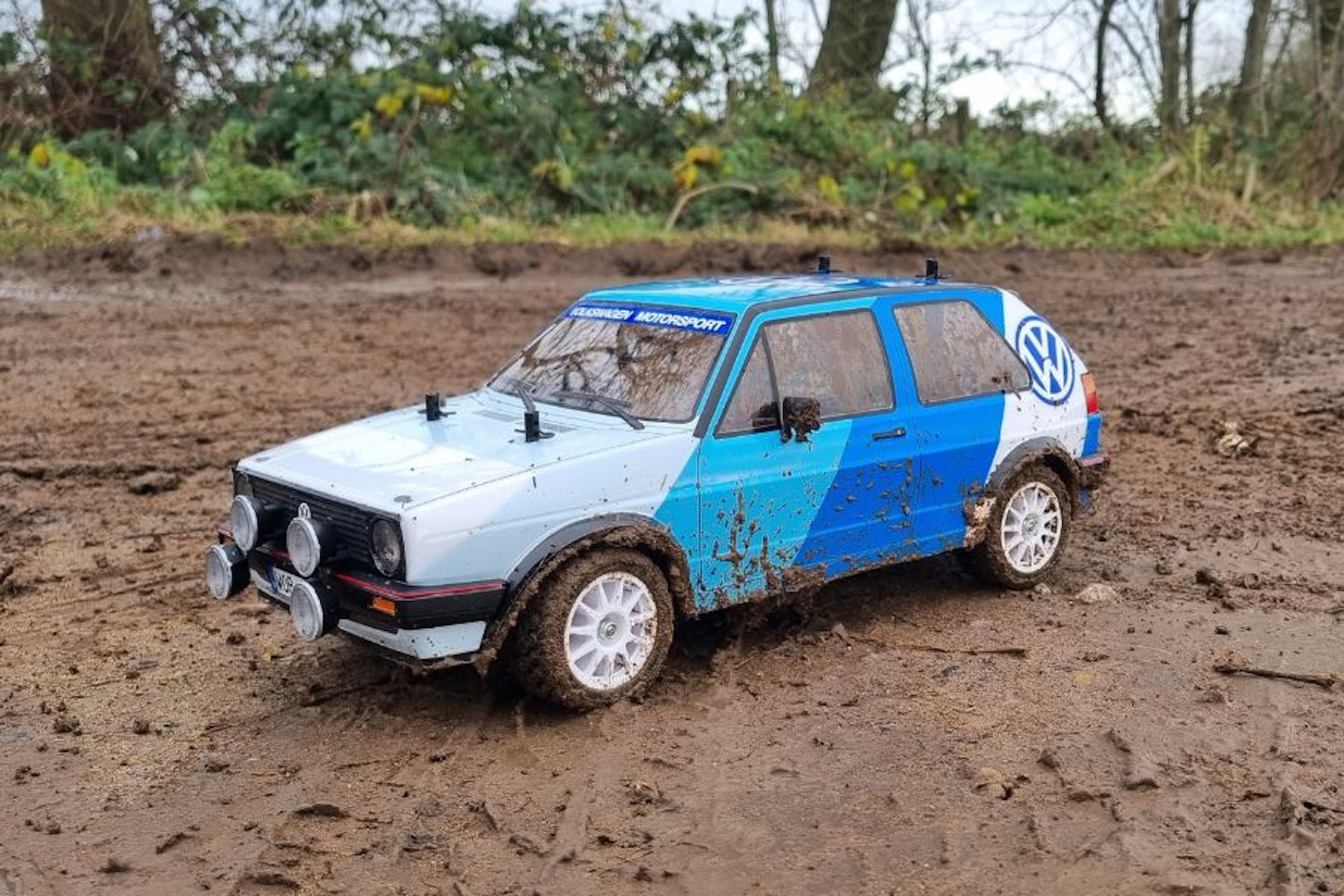
Durability
The MF-01X’s chassis and gears are almost entirely plastic, and that’s a good thing for beginners. Instead of metal that bends or composites that snap, the sturdy engineering plastic has a bit of flex so it’ll bounce off most impacts.
Indeed, trying to drive (with a stick transmitter!) and photograph at the same time led to a bit of an altercation with a curb. Despite clattering into it sideways, the only damage was a couple of scuffs to the stickers on the body. That’s annoying given the work involved, but MF-01X bodyshells aren’t huge money and the od scrape and crack is inevitable if you run these hard.
If you do manage to snap something, parts are readily available and not too expensive. That said, most major parts aren’t available as a single item, instead you buy the entire parts tree as it comes in the kit. It’s handy for having spare suspension arms and the like, but you do end up with plenty of items you’re unlikely to break.
Other things to look out for are the aluminium pinion which wears over time (look for teeth resembling saw blades). A steel replacement is cheap and will prevent this happening. Build without bearings and you’ll also find the axles and shafts will get wobbly over time as the bushes wear.
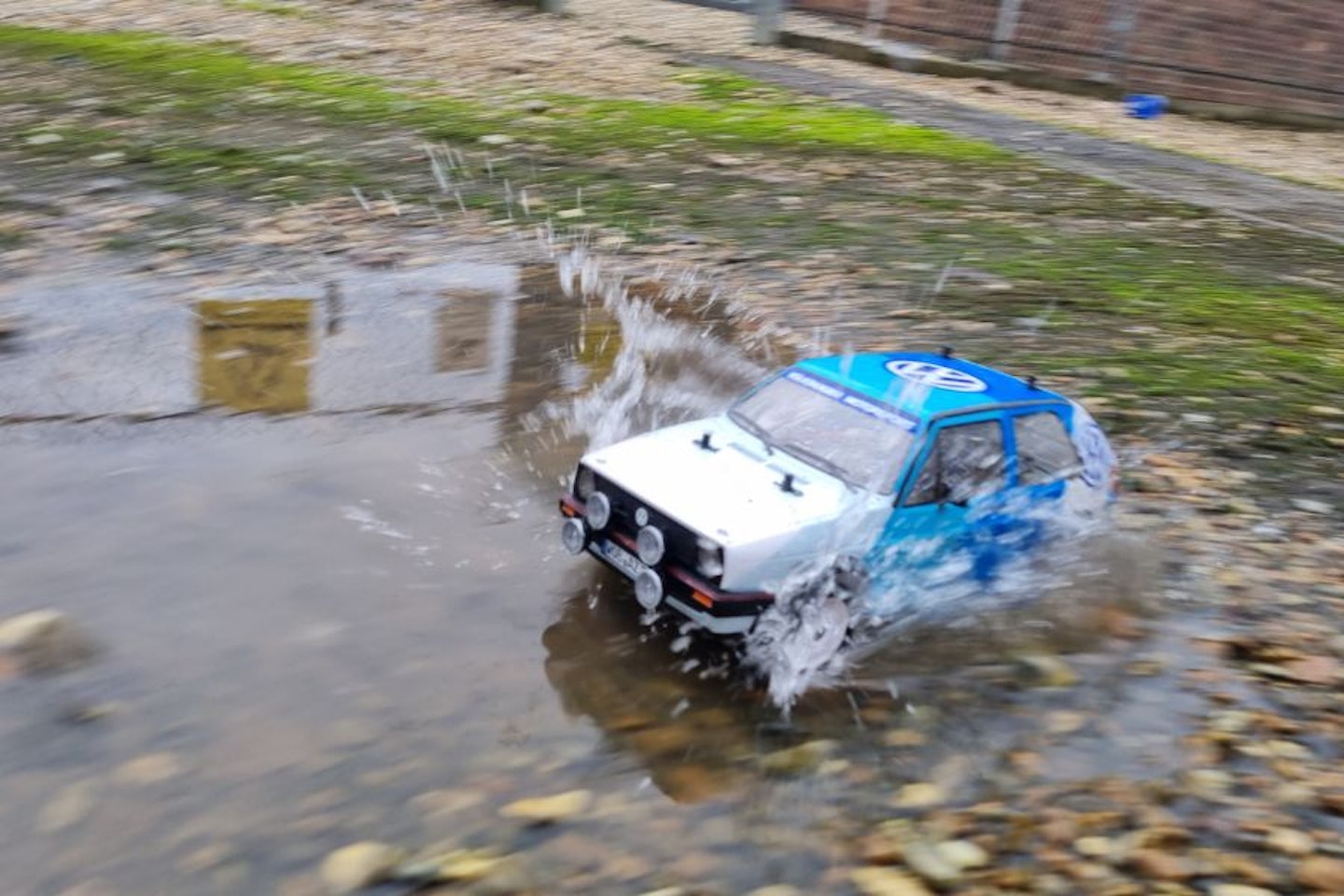
Any downsides?
In a world of brushless ready to run cars, the MF-01X’s top speed isn’t particularly impressive out of the box. Similarly, other manufacturers already include things like bearings, oil filled shocks and other parts that are optional on the Golf.
The unusual battery positioning also means you’re limited by what batteries you can run. Square case LiPos won’t go in at all, so you’re stuck with packs that replicate the classic 7.2v stick pack.
Price and competition
You don’t have to look hard to find online sellers offering the MF-01X Golf at below RRP. Even so, it does look expensive compared to RTR rivals from companies such as FTX. After all, you can get a brushless 1/10th scale touring car that’s good to go for around £15 more than the RRP of the Golf kit on its own.
Of course, that doesn’t have an officially licenced bodyshell or the option of building it and is larger. If you want an M chassis-sized car, the MF-01X is a little more than most two-wheel drive Tamiya models. Look elsewhere and you can find cheaper 4WD M chassis cars, but they won’t have the detailed shell, easy instructions, or light off-roading capability.
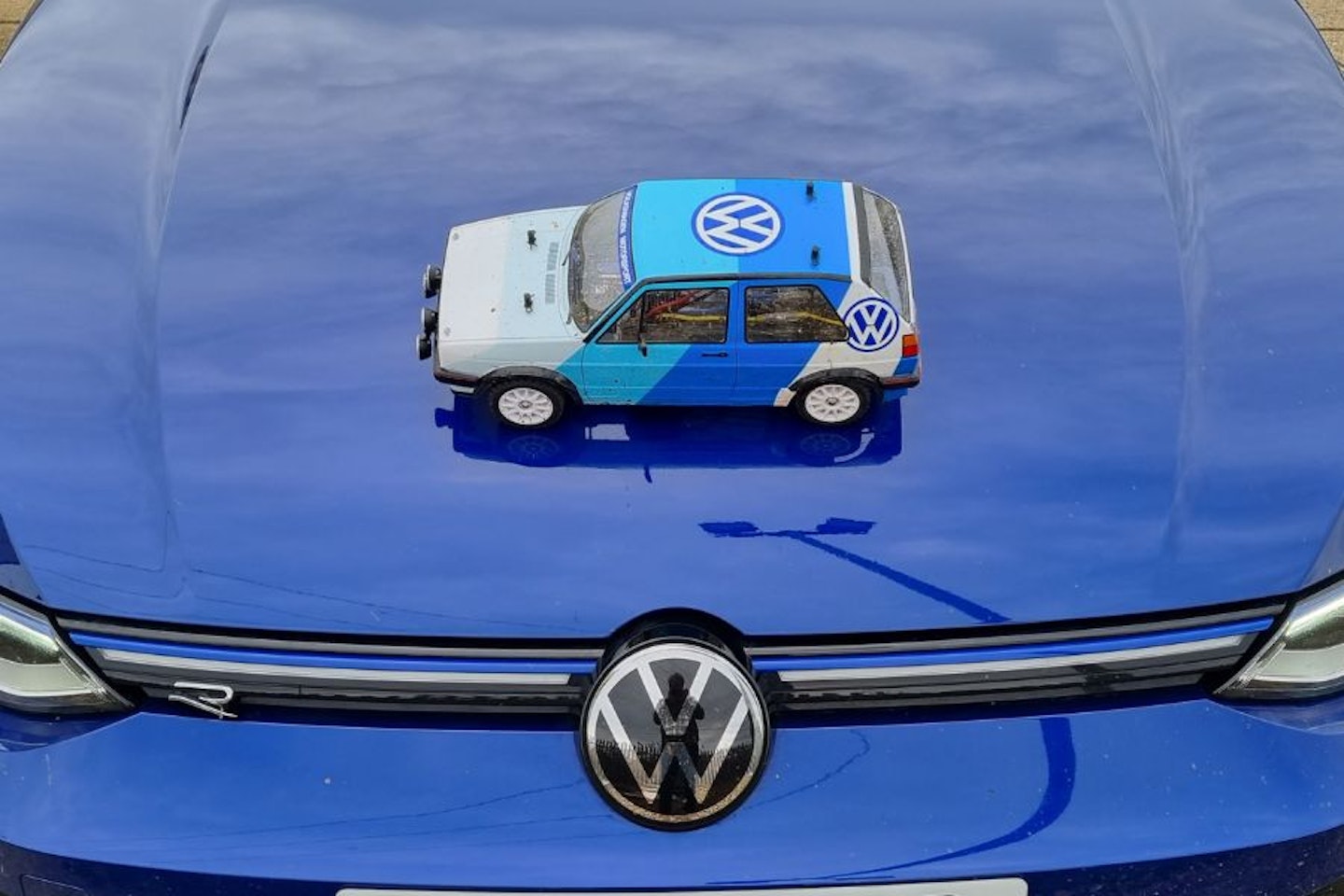
Verdict
As you’d expect from Tamiya, the MF-01X Golf is a quirky take on a rally-capable M chassis platform. It’s fun to build, fun to drive (especially on LiPo) and there’s plenty of tuning potential should you want to go faster or corner quicker.
Some may complain about the basic specifications given the price, but you’re paying for that amazing shell, well-considered build process and durability that Tamiya is famous for. Those that are more familiar with spraying clear Lexan shells may find some of the detail painting a little fiddly, yet it’s absolutely worth putting the effort in.
I think the biggest recommendation I can give it is that I’m already plotting what to do with it next. As enjoyable as it is, some oil-filled shocks will transform the handling and the chassis can clearly a bit more power. It’s the slippery slope that makes Tamiya ownership such a delight, and why I’ve always owned at least one Tamiya car for the last 29 years.
Score: 4/5

Pros
- Excellent instructions make for an easy and enjoyable build
- Stable handling
- Detailed bodyshell
Cons
- Cheaper rivals available
More items to consider
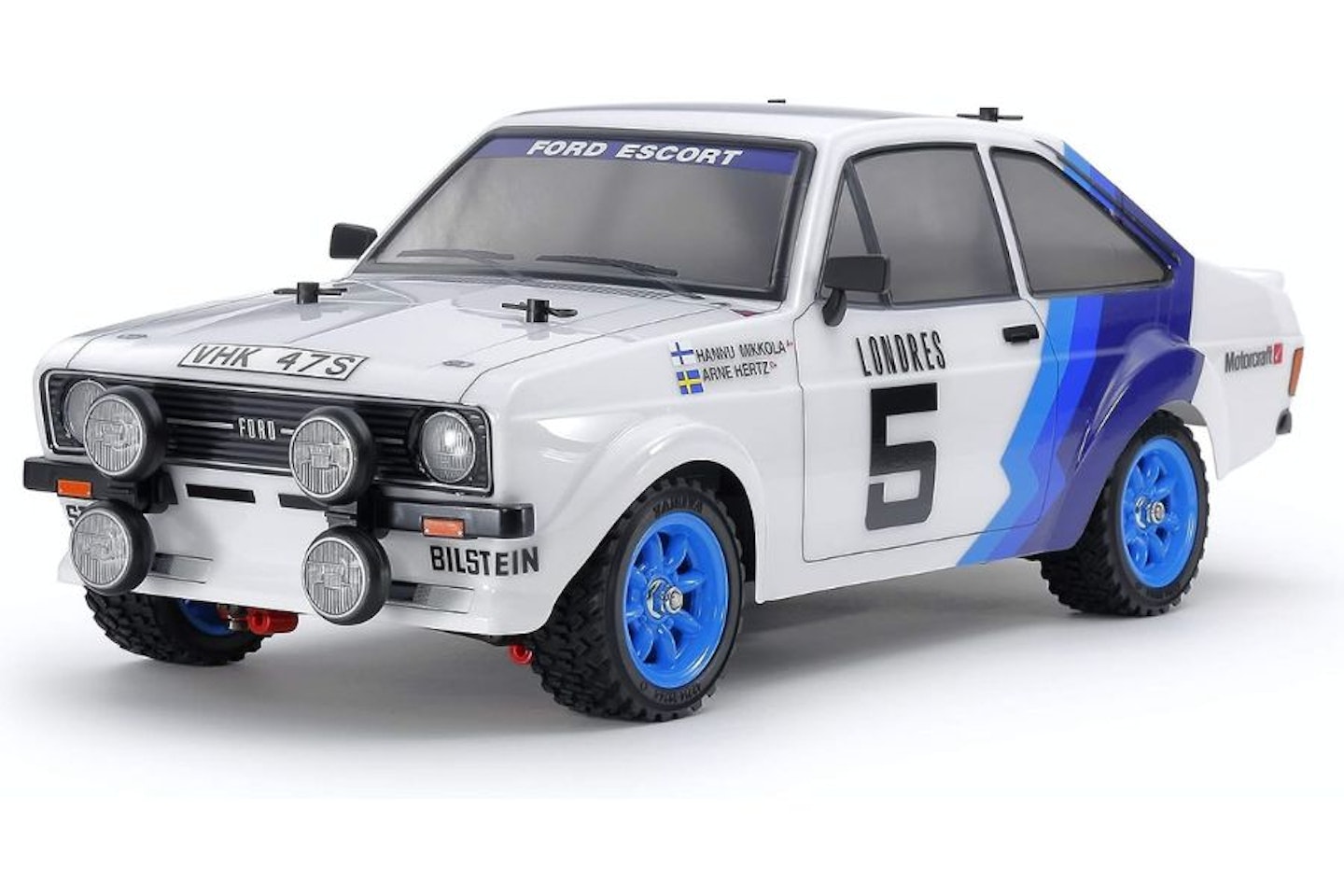
The same chassis as the Golf, but with a fully painted Mk2 Ford Escort shell.
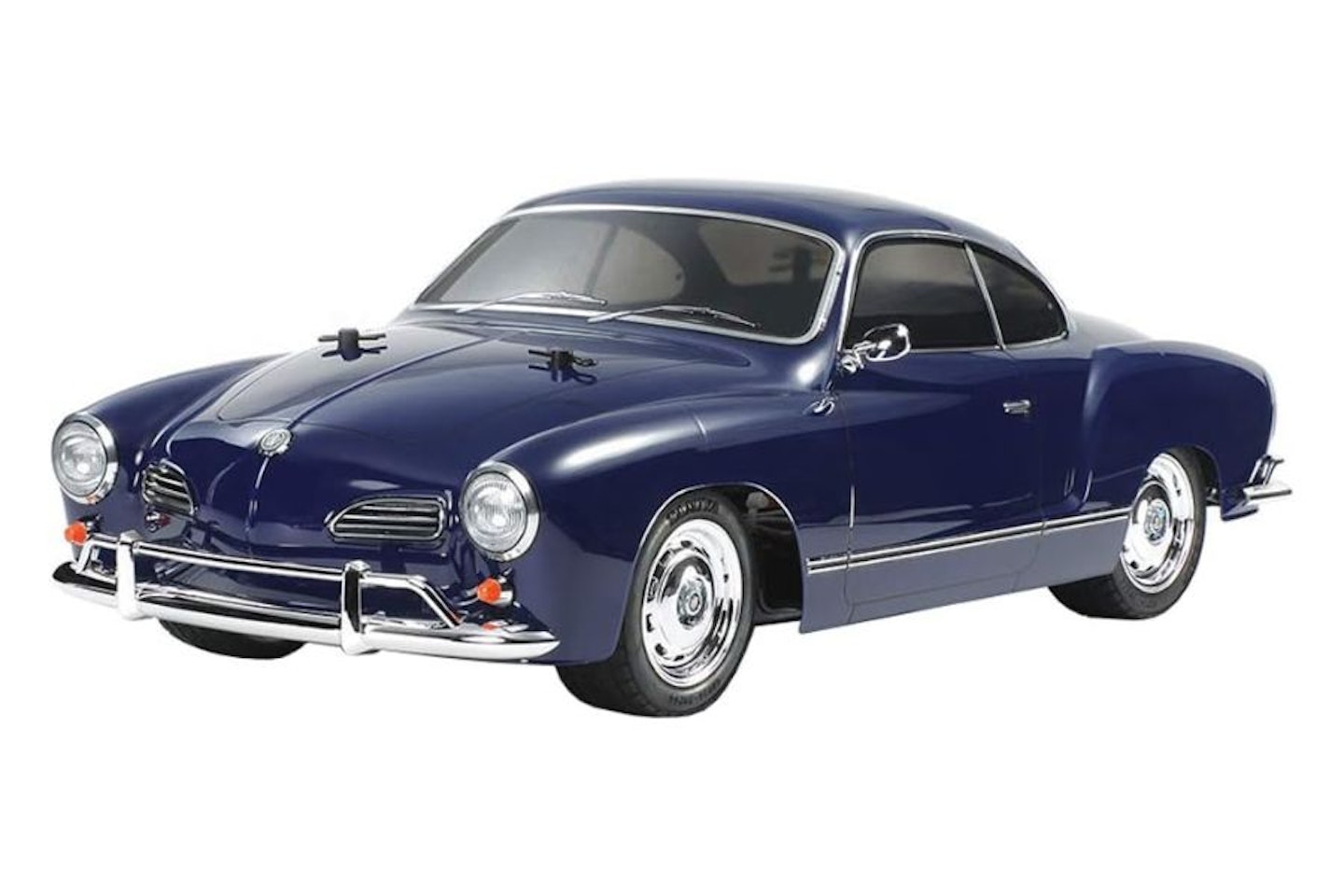
A classic VW with a rear-wheel drive chassis underneath. Similar size, trickier to drive.
Another M chassis rallycar, but this one’s front-wheel drive and usefully cheaper.
Who tested it?
Alan Taylor-Jones is the new cars editor for CAR magazine and also Parkers. He’s been writing about cars professionally since 2015 but has been obsessed with them since not long after birth. When he’s not sampling the latest and sometimes greatest cars, he’s got his hands full with a young family and menagerie of pets. Even so, he still finds the time to have a play with RC cars and Hot Wheels.
How the product was tested
We built the kit from scratch using Carson radio equipment and a 2100mah battery supplied by Tamiya UK. Once constructed, we drove it on a variety of surfaces including damp dirt, gravel, concrete and Tarmac.
As the ESC is LiPo capable, we also took it for a blast on a suitable 2S pack to see what the performance difference was. We probably should have checked whether the Golf’s electronics were waterproof before aiming at a puddle, but it took it like a champ and kept running regardless.
Alan Taylor-Jones is the New cars editor, seasoned road tester and automotive encyclopaedia.
